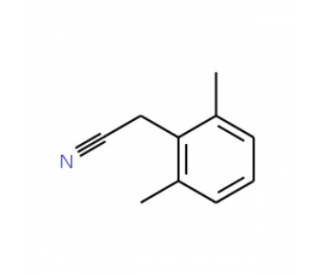详细说明
Purity
>95%, by SDS-PAGE under reducing conditions and visualized by silver stain
Endotoxin Level
<1.0 EU per 1 μg of the protein by the LAL method.
Activity
Measured by its ability to cleave a colorimetric peptide substrate, Hippuryl-Arg. The specific activity is >5,000 pmol/min/µg, as measured under the described conditions. See Activity Assay Protocol on www.RnDSystems.com
Source
Mouse myeloma cell line, NS0-derived Ser16-Tyr415, with a C-terminal 10-His tag Accession # NP_083982
Accession #
N-terminal Sequence
AnalysisSer16
Predicted Molecular Mass
47 kDa
SDS-PAGE
43 kDa and 48 kDa, reducing conditions
2898-ZN |
| |
Formulation Supplied as a 0.2 μm filtered solution in MES and NaCl. | ||
Shipping The product is shipped with polar packs. Upon receipt, store it immediately at the temperature recommended below. | ||
Stability & Storage: Use a manual defrost freezer and avoid repeated freeze-thaw cycles.
|
Assay Procedure
Materials
Activation Buffer: 50 mM Tris, 10 mM CaCl2, 150 mM NaCl, 0.05% (w/v) Brij-35, pH 7.5 (TCNB)
Assay Buffer: 25 mM Tris, 0.1 M NaCl, pH 7.5
Recombinant Mouse Carboxypeptidase B1/CPB1 (rmCPB1) (Catalog # 2898-ZN)
Trypsin (Sigma, Catalog # T-1426)
AEBSF (Catalog # ), 100 mM stock in DMSO
Substrate: Hippuryl-Arg (Sigma, Catalog # H-2508), 25 mM in diH2O
96-well Clear UV Plate (Corning, Catalog # 3635)
Plate Reader (Model: SpectraMax Plus by Molecular Devices) or equivalent
Activate rmCPB1 at 100 µg/mL with 1 µg/mL Trypsin in Activation Buffer.
Incubate at room temperature for 30 minutes.
Add AEBSF at a final concentration of 1 mM to stop reaction.
Dilute activated rmCPB1 to 2 µg/mL in Assay Buffer.
Dilute Substrate to 2 mM in Assay Buffer.
In a plate, load 50 µL of 2 µg/mL rmCPB1, and include a Substrate Blank containing 50 µL Assay Buffer.
Start the reaction by adding 50 µL of 2 mM Substrate into wells.
Read in kinetic mode for 5 minutes at an absorbance of 254 nm.
Calculate specific activity using the following formula:
Specific Activity (pmol/min/µg) = | Adjusted Vmax* (OD/min) x Conversion Factor** (pmol/OD) |
| amount of enzyme (µg) |
*Adjusted for Substrate Blank
**Derived using calibration standard Hippuric acid (Sigma Catalog # 112003).
Per Well:
rmCPB1: 0.1 µg
Substrate: 1 mM
Background: Carboxypeptidase B1/CPB1
Carboxypeptidase B1, encoded by the CPB1 gene, specifically cleaves the C-terminal Arg and Lys residues with a preference for Arg (1). The deduced amino acid sequence of mouse CPB1 consists of a signal peptide (residues 1 to 15), a pro region (residue 16 to 108), and a mature chain (residues 109 to 415). The purified rmCPB1 corresponds to the pro form, which can be activated by trypsin, the only pancreatic protease capable of generating active enzyme from the zymogen in vitro (1).
References:
Aviles, F.X. and J. Vendrell (2004) in Handbook of Proteolytic Enzymes (ed. Barrett, et al.) pp. 831, Academic Press, San Diego.
Entrez Gene IDs:
1360 (Human); 76703 (Mouse)
Alternate Names:
carboxypeptidase B; carboxypeptidase B1 (tissue); Carboxypeptidase B1; CPB; CPB1; DKFZp779K1333; EC 3.4.17; EC 3.4.17.2; Pancreas-specific protein; PASP; PCPB; procarboxypeptidase B











 粤公网安备44196802000105号
粤公网安备44196802000105号